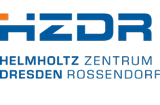Multimodal Imaging and Quantitative Accuracy
Assessment of in-vivo quantification accuracy
Positron emission tomography (PET) allows to quantify regional tracer uptake and to derive parameters such as standardized uptake values (SUV) and tracer kinetic transport constants which help to objectify and improve prediction and monitoring of therapy outcome in various tumor diseases. For many years now, PET has been successfully used in combined PET and computed tomography (CT) systems (PET/CT) for such purposes. More recently, PET and magnetic resonance imaging (MRI) have been combined in hybrid PET/MR imaging devices. This combination has the advantage that MRI offers improved soft tissue contrast in comparison with CT. However, PET/MR complicates accurate quantification of the PET data. Consequently, the quantification capabilities of combined PET/MR systems need to be investigated thoroughly. Most of the work in this context has focused on standard phantom measurements but such measurements do not provide direct information regarding quantification accuracy in patient studies.
Recently, a strategy for direct assessment of the actual in vivo quantification accuracy of a PET system has been proposed by us and applied to two different PET/CT systems and one stand-alone PET system. In this work, a comparison was performed between tracer activity in the bladder as measured by PET and urine samples measured in a cross-calibrated well-counter. It was shown that there is a systematic modest underestimate across different PET and PET/CT systems.
We could further demonstrate that our PET/MR system underestimates true activity concentration in the pelvic region more serverely than the previously investigated three PET and PET/CT systems. The most probable cause for the increased underestimate seems to be a number of shortcomings (e.g. inaccurate truncation compensation) of present-day MR-based attenuation correction.
References:Evaluation of MR-based attenuation correction
To correctly quantify tracer concentrations in positron emission tomography (PET), attenuation correction is mandatory since the emitted annihilation photons can interact with the tissue prior to reaching the PET detectors and are thus scattered or absorbed in the body. The fraction of photons that reaches the detectors without any interaction naturally depends on the tissue type and amount of tissue between point of emission and detector.
To analyze the quantitative accuracy of MR-based attenuation correction (MRAC), we conducted a patient study in cooperation with the Department of Nuclear Medince at the University Hospital Dresden. In this study, patients were examined first in a stand-alone PET scanner (which uses 68-Ge sources for a direct measurement of the attenuation). Subsequently, all patients were examined in a combined PET/MRI. In this way, we were able to reconstruct the emission data from the PET/MRI with two different methods for attenuation correction. First, we used the vendor-provided MR-based attenuation correction and second we used the measured transmission form the standalone PET. A comparison of the two reconstructed PET images showed that MRAC-based deviations in the reconstructed PET activity concentration are in the range from -15% to +15% if the tissue-type-segmentation works correctly. In case of segmentation errors, however, much more serious deviations of the order of 50% can occur.
References:- Schramm et al., IEEE Trans. Med. Imaging 32, 2056-2063, 2013
- Schramm et al., MAGMA 25, 115-126, 2013
Improved MR-based attenuation correction
Because the vendor-provided tissue type segmentation results in incorrect attenuation images in the presence of MR image artifacts (e.g. resulting from metal implants), we developed a new improved segmentation methode that is able to compensate for these artifacts. This algorithm uses a delineation of a dedicated MR image and a separate delineation of the PET image. An example showing the results of this approach in a patient with hip and knee endoprotheses is shown.
References:- Schramm et al., Medical Physics 42, 6468-6476, 2015
- Schramm et al., Phys. Med. Biology 59, 2713-2726, 2014
Translation into clinical application
To be able to evaluate the practical benefit of our developed methods in a clinical environment, we have developed a software platform (pyPRS) which allows to use our aforementioned methods in a clinical setting. This includes semi-automatically reconstructing PET/MR data (which is affected by inaccurate MR-based attenuation correction) with our improved MR segmentation, providing the clinicians with a corrected image dataset with improved quantitative accuracy.
References:
